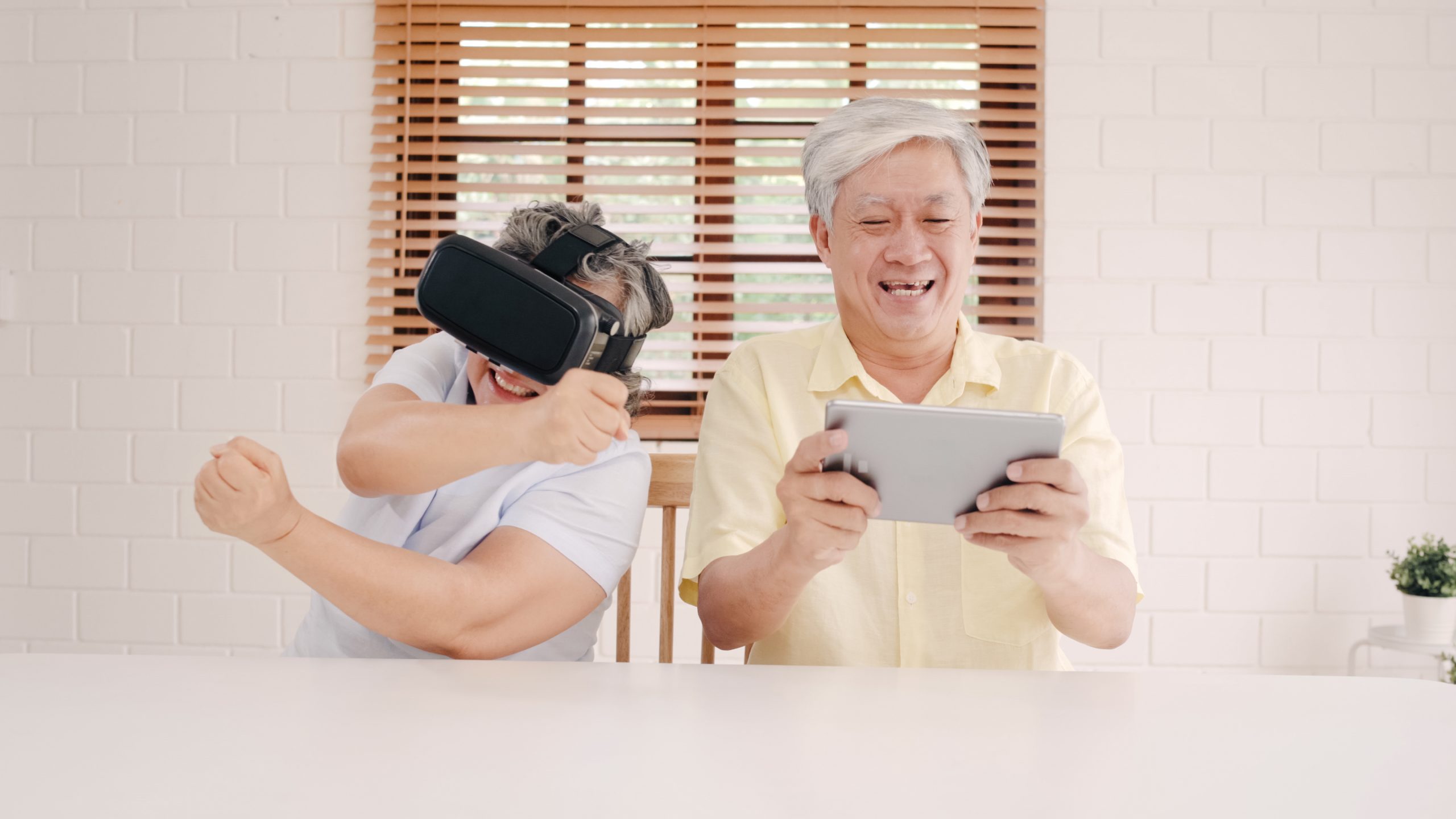Innovation in Healthcare
Imagine a child who falls and scrapes their knee. They might cry for a moment but quickly return to playing as if the pain never existed. Now think about emotional pain, especially in the lives of the elderly. Such pain doesn’t fade so easily and often becomes an emotional and physical burden. How can we help them cope? The answer may lie in an innovative and transformative technology: Virtual Reality (VR).
Emotional Pain in the Elderly and Its Impact on Well-Being
We all experience moments of loneliness and dissatisfaction, but for seniors, these pains can intensify. Losing loved ones, lacking a clear sense of purpose, and facing social isolation create fertile ground for feelings of helplessness, often compounded by conditions like Alzheimer’s and dementia.
Virtual Reality offers a unique opportunity to change this narrative. Through immersive environments, the elderly can:
- Reconnect: Experience scenarios that encourage interaction and communication.
- Reduce Stress: Immerse themselves in environments designed to promote relaxation and joy.
- Rediscover Purpose: Engage in activities that reignite forgotten pleasures and interests.
Proven Impacts: Seniors who were previously isolated or barely communicative report smiles, increased interactions, and a renewed outlook on life after VR sessions.
Virtual Reality and Pain Relief: Physical and Emotional
VR’s effectiveness extends beyond emotional relief to the treatment of physical pain. Over 100 clinical studies confirm that Virtual Reality can be used to:
- Chronic Pain Relief: Redirecting the brain’s attention reduces the perceived intensity of pain.
- Anxiety and Depression Reduction: Immersive environments create positive distractions and promote relaxation.
- Cognitive Stimulation in Dementia: Interaction with virtual scenarios stimulates the mind in engaging and playful ways.
The SnowWorld Case: A Revolutionary Study
In the 1990s, Dr. Sam Sharar from the University of Washington conducted a groundbreaking study with patients suffering from severe burns. They were exposed to the VR program SnowWorld, a virtual world filled with snow and icy cliffs.
Results:
- Patients reported a significant reduction in perceived pain.
- Brain imaging showed decreased activation in areas related to pain processing.
The explanation lies in VR’s ability to deeply “engage” the brain, diverting focus away from the painful experience.
Why Virtual Reality Is a Revolution in Elderly Care
VR is not just a technological tool; it represents a revolution in health care, offering opportunities to:
- Rediscover Joy and Connection: Seniors can revisit meaningful places or explore calming environments.
- Face Treatments with Greater Comfort: Patients in painful situations find relief in virtual worlds.
- Expand Therapeutic Approaches: Healthcare professionals gain a powerful tool to complement traditional treatments.
Conclusion: Renewing Lives, One Session at a Time
With its ability to transform pain into connection, hope, and relief, Virtual Reality is redefining how we care for older generations. It’s not just about technology; it’s empathy in action, creating moments that go beyond treatment to foster joy, comfort, and a renewed outlook on life.
Perhaps it’s time to see Virtual Reality as an essential tool for building a more dignified and connected life for those who matter most.
References
- Sharar, S. R., et al. (2007). “Virtual Reality Pain Relief During Burn Wound Care.” Journal of Clinical Psychology.
- Wiederhold, B. K., & Wiederhold, M. D. (2019). Virtual Reality for Pain Management. Springer Nature.
- World Health Organization (2021). “Innovative Technologies in Healthcare: Bridging the Gaps.”
- Rizzo, A., & Koenig, S. T. (2017). “Is Clinical Virtual Reality Ready for Prime Time?” Annual Review of Clinical Psychology.

